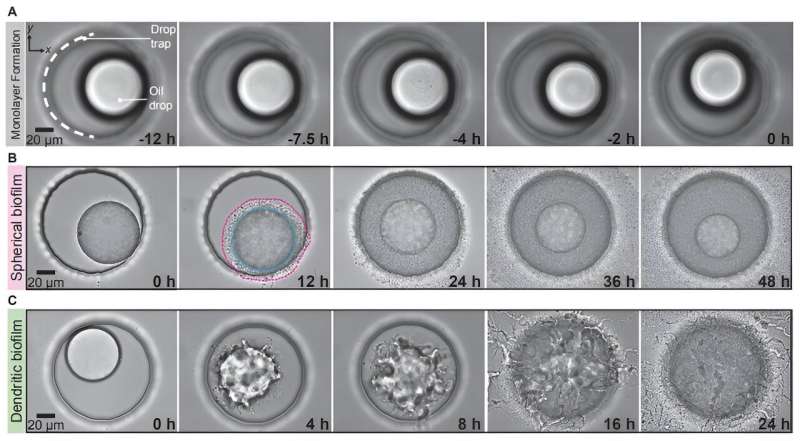August 18, 2023 report
This article has been reviewed according to Science X's editorial process and policies. Editors have highlighted the following attributes while ensuring the content's credibility:
fact-checked
peer-reviewed publication
trusted source
proofread
Oil eating microbes reshape droplets to optimize biodegradation

A team of French and Japanese environmental scientists has found that one kind of oil-eating microbe reshapes droplets to optimize biodegradation. In their study, reported in the journal Science, the group isolated Alcanivorax borkumensis bacteria specimens in a lab setting, fed them crude oil, and then watched how they worked together to eat the oil as quickly and efficiently as possible. Terry McGenity and Pierre Philippe Laissue with the University of Essex's School of Life Sciences have published a Perspective piece in the same journal issue describing the work.
Prior research has shown that there are many microbes living in the ocean that feed on oil, eventually cleaning away oil not cleaned up by human efforts. Prior research has also shown that such microbes are not able to consume crude oil until it disperses into droplets, which can take a long time. In this new effort, the researchers sought to learn more about the process of crude oil consumption by sea microbes. To that end, they collected A. borkumensis specimens and tested them in their lab.
Under a microscope, the research team observed that A. borkumensis formed biofilms around oil droplets—but they did so in two major ways. In one experiment, A. borkumensis samples that had not been exposed to crude oil before were introduced to simple crude oil droplets. Groups of the bacteria converged on a droplet, forming a sphere. The sphere shape persisted until the entire oil droplet had been consumed.
But when the team exposed samples with experience consuming crude oil, their behavior was much more advanced. Initially, upon converging on a droplet, a sphere formed—but then finger-like protrusions formed, radiating out from the sphere, each completely covered with bacteria. The result was much faster, more efficient consumption of the droplet.
The researchers suggest that the formation of the protrusions results in more oil surface area exposure, allowing more of the bacteria to consume the oil droplet at the same time, compared to the simple sphere, resulting in faster consumption.
More information: M. Prasad et al, Alcanivorax borkumensis biofilms enhance oil degradation by interfacial tubulation, Science (2023). DOI: 10.1126/science.adf3345. www.science.org/doi/10.1126/science.adf3345
Terry J. McGenity et al, Bacteria stretch and bend oil to feed their appetite, Science (2023). DOI: 10.1126/science.adj4430
Journal information: Science
© 2023 Science X Network





















